|
MOUNT KILIMANJARO
What?
An inactive stratavolcano
Where?
North-eastern Tanzania
Total height:
19,330ft (66% that of Everest!)
Highest point:
Uhuru Peak
Last eruption:
None recorded
First ascent:
1889
Mount Kilimanjaro is an inactive stratavolcano. Stratavolcanoes are those which have more than one scar/opening and has
many layers beneath ground level. It is not extinct and is considered capable of erupting in the future, however it will not
be for a long long time. Think of it as an animal hibernating. At the present moment, the volcano is considered dormant on
the inside, but active at its summit. It has strata classification due to the existence of it's three individual cones - Kibo,
Mawenzi and Shira.
Kilimanjaro is situated in north-eastern Tanzania. The term Kilimanjaro Upandju comes from the Swahili
term for 'climb' as Swahili is the native language of Tanzania. It's highest point is Uhuru Peak on the volcano Kibo. The
first recorded complete ascent was on Oxtober 6th, 1889 by Maranguan Yohanas Kinyala Lauwo, German Hans Meyer and Austrian
Ludwig Purtscheller. Due to its geographical location near the equator as well as its considerable height, Kilimanjaro experiences
all four seasons as one ascends - from the dry humid foot to the year-round snowy, wintry summit. Kilimanjaro also holds another
lesser known record - it is officially the highest point in the world where one can get mobile phone service due to the presence
of the world's highest located mobile phone mast.
There are several routes up the mountain with Machame being the more scenic but tougher climb and Rongai being considered
the easiest in terms of gradient and composition of the land underfoot. Thomas has yet to decide which route he wishes to
take. Most climbers of Kilimanjaro will experience some degree of altitude sickness and acclimatisation is essential in the
planning of a successful climb. Typical symptoms include nausea, vomitting, disorientation, shortage of breath, headaches,
blurred vision, hypothermia and nose-bleeds. It is because of this that so many climbers abandon the trek at a lower altitude.
A good tip and one that Thomas will be putting into practice is considered the best way to overcome altitude sickess and that
is to climb to a certain height, and immediately turning back, descending a certain height and spending the night. It may
seem pointless but the fact your body is spending overnight at a lower altitude to which it has recently reached helps dramatically
apparently.
Also for the record, in 1988, the first complete descend by snowboard was completed by Canadian Ace Bailey.
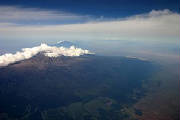
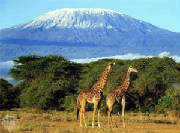
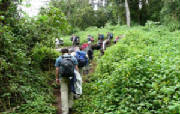
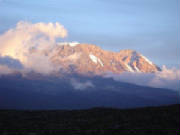
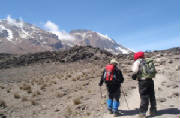
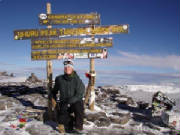
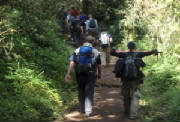
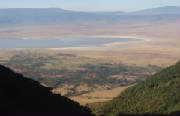
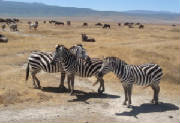
|
 |
|
KILIMANJARO UPANDJU
Thomas knows fine well the challenge that lies before him and he'll be ensuring
every last part of the challenge is planned and catered for. However if you, like myself, have not yet climbed Mount Kilimanjaro;
you may be unaware of exactly what this challenge entails. Have a read, and find out...
The entire ittiniery is given below. However, a full copy of the same ittiniery
is available for download below. The file is taken from the official Charity Challenge website and is in .pdf format (will
require a .pdf viewer)
Kilimanjaro Summit Climb
***************************************
At 5,895m, Mt. Kilimanjaro is one of the largest volcanoes ever to break through the Earth’s
crust. Your challenge is to reach its summit!
Your trek starts in the rainforests of Lemosho Glades and heads upwards as you acclimatise on
Shira Plateau. From here you will catch a glimpse of your goal, Kibo, Kilimanjaro’s main ice-capped peak. You continue
via the beautiful Southern Flank, Barranco Wall and Barafu Route.
Temperatures drop at night, allowing you to enjoy the crisp cool air under the star-studded
African skies. During the days you’ll rise higher; often looking down on a sea of clouds.
The expedition has been carefully planned to ensure that you acclimatise as much as possible
to the altitude and your chances of making it to the summit are maximised. Our operations teams have one of the highest success
rates of trekkers reaching the summit, but don’t underestimate the challenge ahead.
On the final night before the summit climb you shall need to rise at around midnight to
commence the final trek in the moonlight up the scree slopes to Stella Point. Your aim is to reach this point by dawn and
continue around the rim to the highest point, Uhuru Peak. This is likely to be the toughest day that most trekkers have ever
experienced, involving 1,295m of ascent, 2,145m of descent, and 12-15 hours walking.
***************************************
Day 1: Depart UK for Kenya
Day 2: Transfer to Arusha
Involves getting an internal flight to Kilimanjaro Airport or transfer overland across Kenya. Cross the border
into Tanzania, where Thomas will have lunch and a briefing before heading to bed in Arusha Hotel, near the foot of Kilimanjaro
Day 3: Rainforest Trek (2,800m)
Register at the main gates of the national park. Trek through the rainforest from Lemosho Glades to Big Tree
Camp at 2,800m, following Chamber's Route. Dinner and overnight in Big Tree Camp
Day 4: Acclimitisation Trek (3,500m)
7-8 hours of climbing, taking in around 600m. Camp and dinner at Shira One, in the shadow of what will now
be visible - the Kobo peak of Kilimanjaro
Day 5: Shira Plateau (3,800m)
5-6 hour trek acroos the plateau to Shira Two
Day 6: Southern Flank (3,900m)
Crossing the Southern flank, passing down the Barranco Valley to the camp at Barranco Wall. Here Thomas
will camp and have dinner at 3,900m and only 210m higher than his previous night’s camp at Shira Two, but the walk
will have taken you to 4,440m and over the ridge or to 4,550m and over Lava Tower offering valuable altitude acclimatisation
Day 7: Barranco Wall and the Karanga Valley (3,900m)
Climb up Barranco Wall (4,170m) with an immediate height gain of 200m to admire the views of Mount Meru and
the plains far below. You will continue across the ridges and valleys to Karanga Camp at 3900m. Optional further acclimitisation
trek, taking 7-8 hours in total. Overnight at the Karanga Camp
Day 8: Barafu Ridge (4,600m)
The 3-5hr trek up to Barafu Ridge Camp is tough due to the altitude. Thomas will have an early dinner
and rest until midnight, when you commence your push for the summit
Day 9: Summit Day! (5,895m)
Thomas will trek up the scree slopes to Stella Point, continuing around the rim to the highest point
Uhuru Point. It can seem mild at first but as you reach the exposed ridges, wind chill causes the temperature to plummet.
First light is apparent around 0530hrs and this really gives you hope to push on upwards. You should reach Stella Point (5,750m)
- on the crater rim just after dawn; then after a short rest continue for another hour or so round to Uhuru Point. After reaching
Kilimanjaro’s summit (5,895m) and having enjoyed the amazing views, you will continue via Stella Point. You descend
the scree slopes via Barafu Ridge Camp for a few hours rest and then on to Millenium Camp (3,750m). This is to be the toughest
day that most trekkers have ever experienced, involving 1,295m of ascent, 2,145m of descent, and 12-15hrs walking. Thomas
will hopefully be celebrating Victory Day at this point!
Day 10: Descend to Mweka Gate
Day 11: Optional Safari (lasting three additional days). Depart Tanzania for UK
Day 12: Arrive back in UK. Virgin Train takes him back to Glasgow
|
 |
|
|
 |
|
|
|

